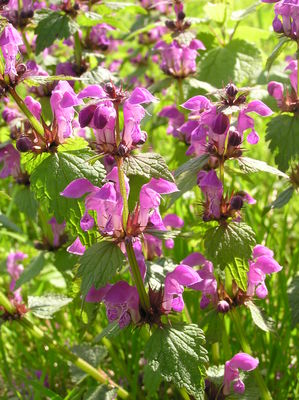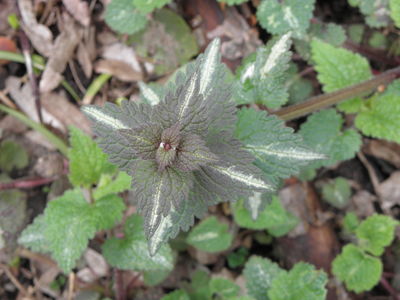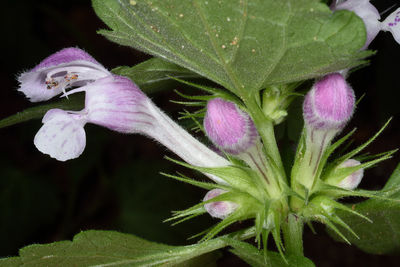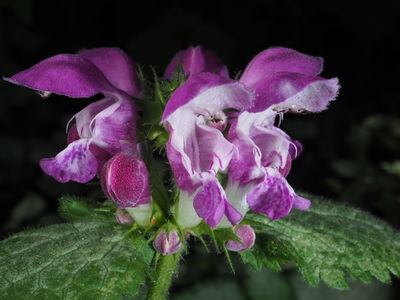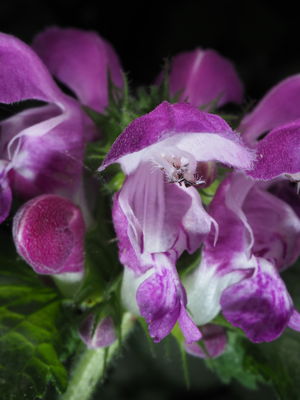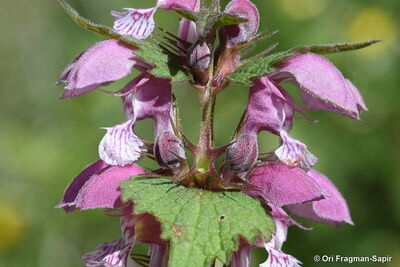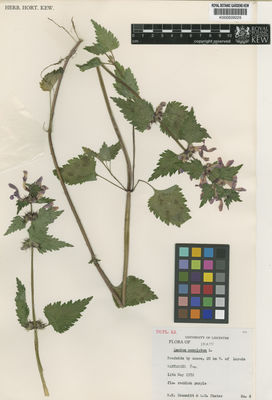-
General Description
-
The leaf markings of the spotted dead-nettle make it an attractive and popular choice for gardeners, and with its large purple flowers easily distinguish it from the common stinging nettle (
Urtica dioica).
Lamium maculatum is a very variable species in the wild, where leaf size and shape, petiole (leaf stalk) length, hairiness and flower colour can be quite different even in the same population. The spotted leaves of this plant give it both its common and Latin names (maculatum = spotted, stained). In the wild the white leaf markings are more likely to be present during the winter. The leaf markings make spotted dead-nettle attractive to gardeners. There are now numerous cultivars with leaves much more decorative than those of their wild relatives, for example Lamium maculatum 'Beacon Silver' and L. maculatum 'Roseum'.
-
Species Profile
-
Geography and distribution
Europe to China; introduced in Great Britain and New Zealand; found growing as a garden escape in Canada and the USA. Spotted dead-nettle has been found up to 2,000 m above sea level.
Description
Overview: Spotted dead-nettle is a perennial herb with creeping stems (but with distal parts upright), and is mostly hairy.
Leaves: The leaves have petioles (leaf stalks) that are shorter than the blades. The leaf blades are heart-shaped to ovate or ovate-oblong, and the margins are usually coarsely scalloped to toothed; the upper and lower surfaces are hairy, the upper surface often with a white band and a few blotches either side, especially in winter.
Flowers: The calyx is tubular, with five narrowly triangular teeth. The corolla is purple, rarely white with dark purple markings. The upper lip is arched, and the lower lip is about as long as the upper lip and at right angles to it. The stamens (male parts) are held in the upper lip and bear orange pollen.
Fruits: The fruit comprises four brown nutlets (one-seeded sections, or mericarps, of the fruit).
Uses
Spotted dead-nettle makes an attractive addition to herbaceous borders or woodland gardens, and is a useful ground cover species.
This species at Kew
Spotted dead-nettle can be seen growing in the Queen's Garden, adjacent to Kew Palace and in the Plant Family Beds at Kew.
Pressed and dried specimens of Lamium maculatum are held in the Herbarium at Kew, where they are made available by appointment to researchers from around the world. The details, including an image, of one of these specimens can be seen online in the Herbarium Catalogue.
-
Ecology
-
Mixed and deciduous forests, in thickets and hedges, roadsides, banks of streams, rocky places and walls, mountain pastures and fields; grows best in calcareous soil and shade.
-
Conservation
-
Widespread and not of conservation concern.
-
Hazards
-
None known.




